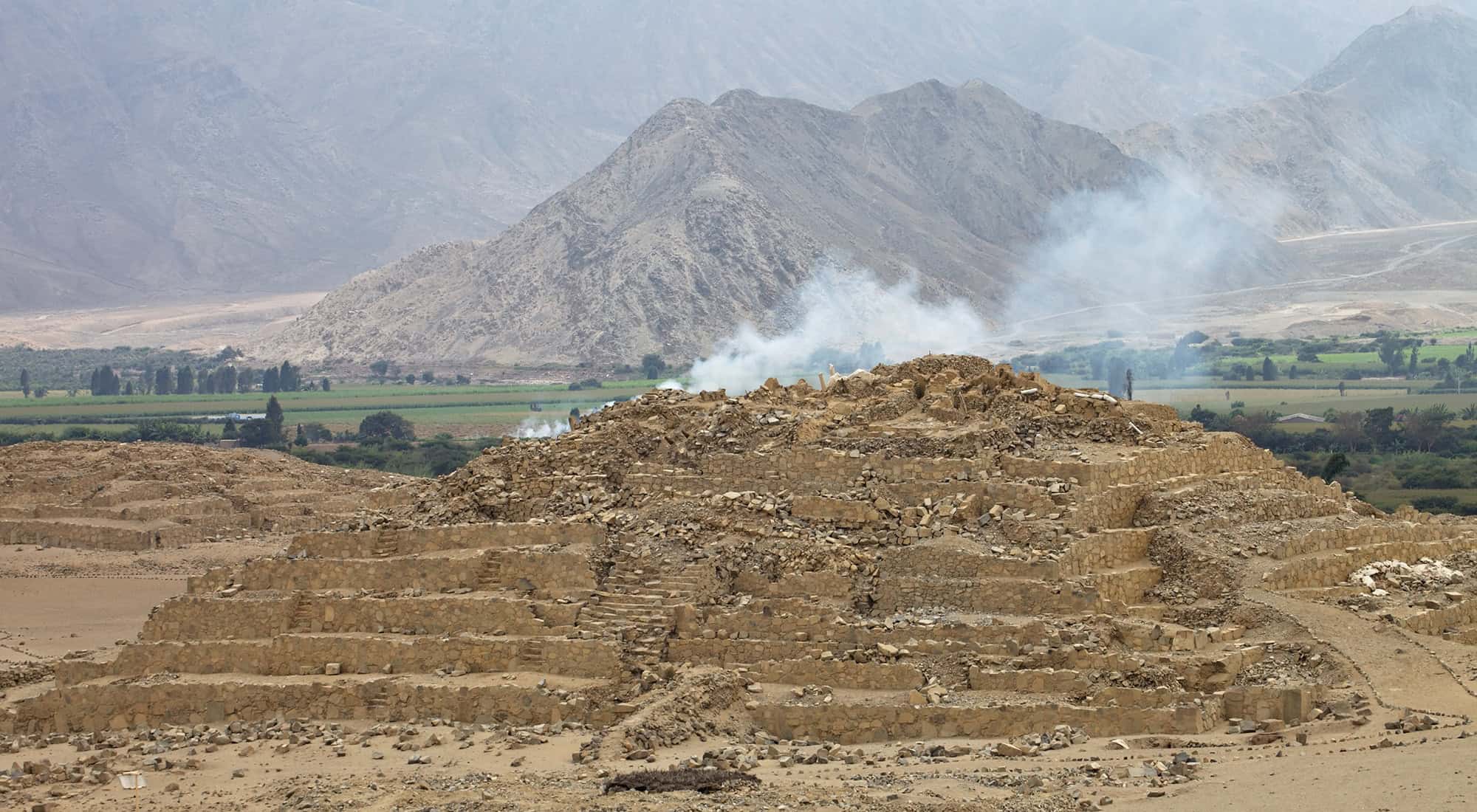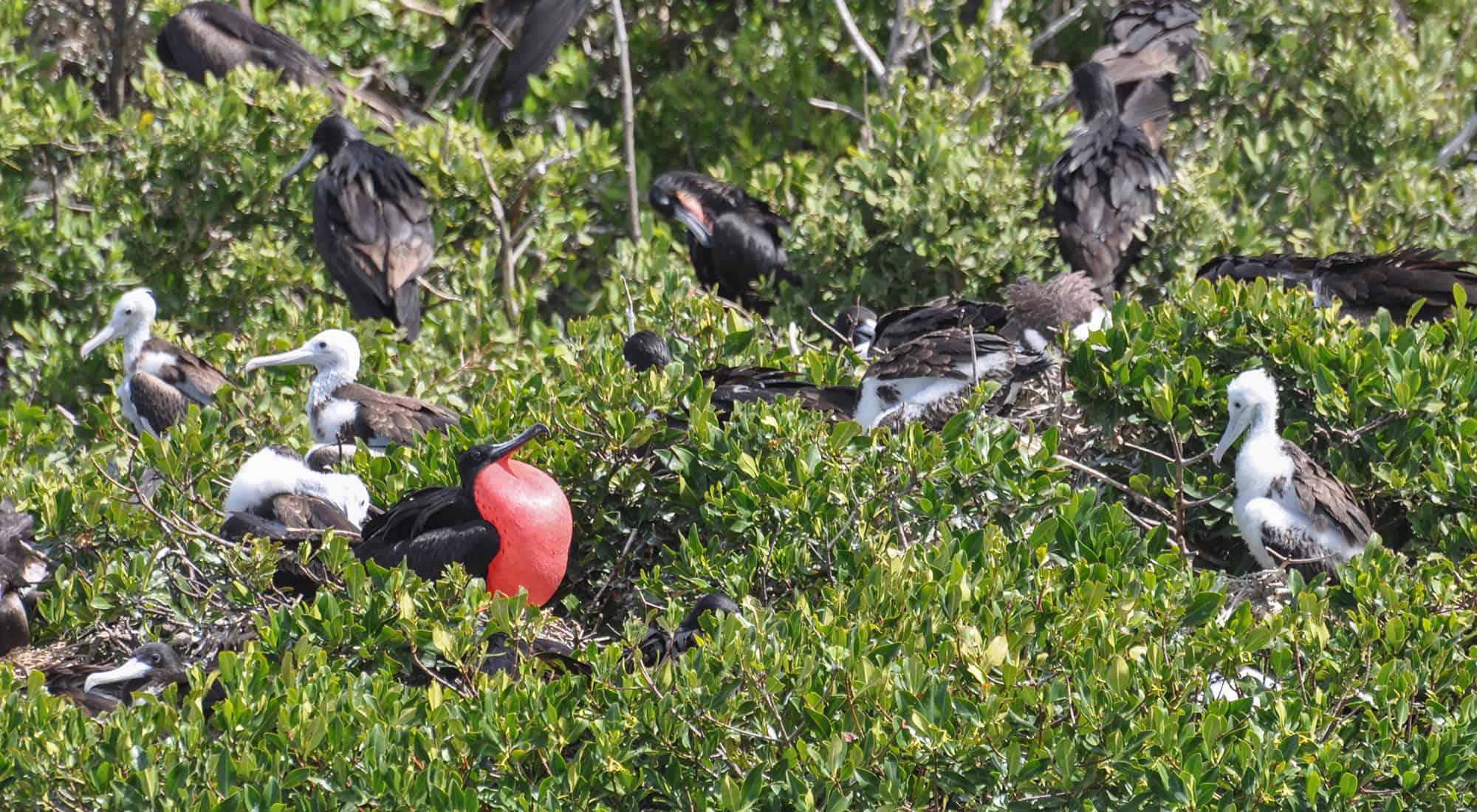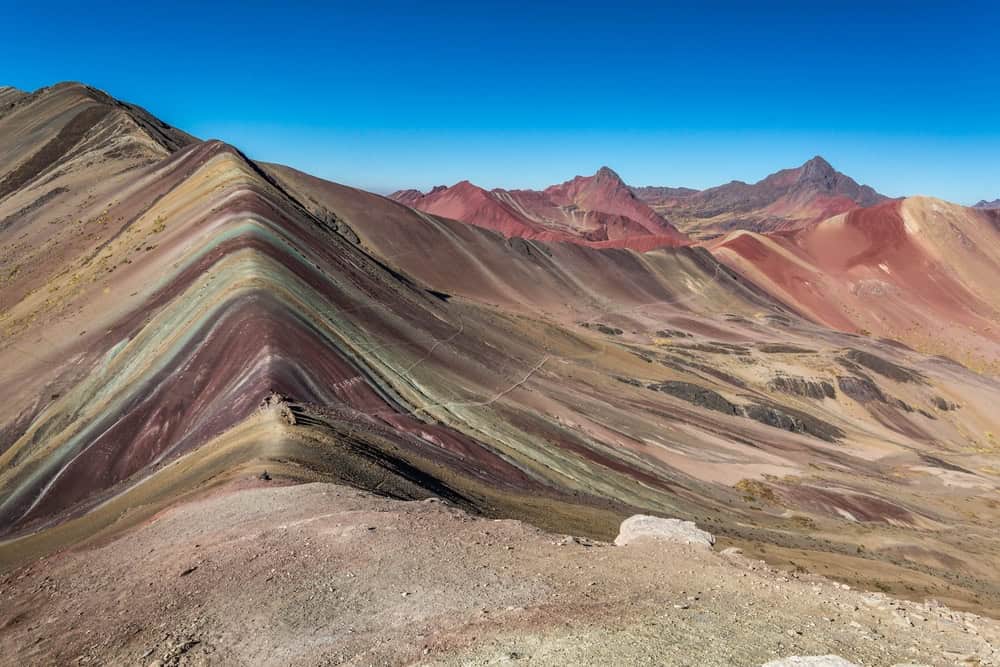Peru’s north coast could well be described as the Egypt of South America. This is a region of numerous monumental ruins, built by the many highly skilled pre-Inca cultures that once thrived here.
The ground-breaking discovery at Caral is now open to visitors. Not far from Trujillo, Chan Chán was the capital of the Chimú Kingdom; its crumbling remains still represent the largest adobe city in the world. The Huaca de la Luna and the Huaca Cao Viejo of the Moche Empire are revealing fabulous, multicoloured friezes of gods from the first millennium AD. Further north, near Chiclayo, the adobe brick pyramids of Túcume, Sipán and Sicán rise massively from the coastal plains. The wealth from some of their tombs is now displayed in state-of-the-art museums.
But it’s not all pyramids and royal tombs. The elegant city of Trujillo is one of the finest examples of colonial architecture in the country. There are charming towns, such as Huanchaco, with its bizarre-looking reed fishing rafts, and Chulucanas, with its famous pottery. Up and down the coast the seafood is wonderful and the hospitality unrivalled. In addition, the northern seaboard enjoys a rain-free climate all year and has Peru’s finest beaches for bathing and surfing. Around Tumbes, the most northerly regional capital, four reserves protect mangroves, equatorial dry forest and tropical forest, each with its share of endangered species. Some of Footprint’s top picks:
Caral
This site may be the oldest city in South America.
Sechín
The 500 monoliths here depict a gruesome battle in graphic detail.
Trujillo
The city’s mansions, with their elaborately carved wooden balconies, are among the finest in Peru.
Huanchaco
Hang out with other travellers at this appealing surfing village.
El Brujo
This ancient complex was a ceremonial centre for up to 10 cultures.
Lambayeque and Ferreñafe
These colonial towns are a good base for exploring the surrounding sites.
Northern beaches
Enjoy some of the best surf and warmest water in Peru.
Tumbes’ natural parks and reserves
Four protected natural areas are home to unique ecosystems.










